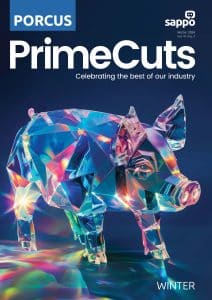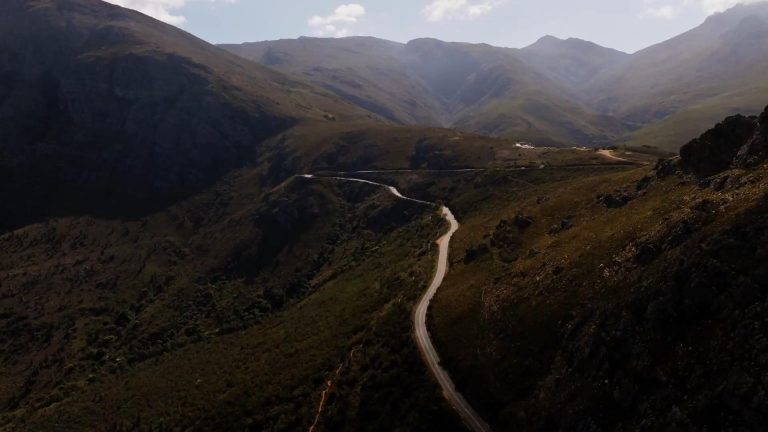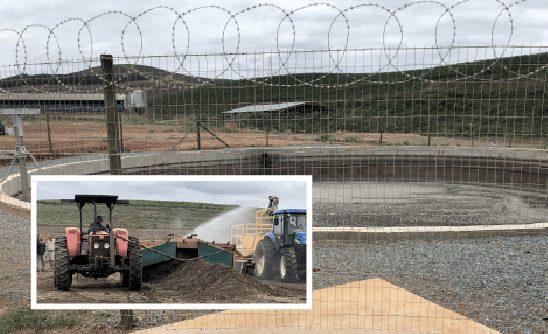After eight years of revamping, Baynesfield Estate outside Pie–termaritzburg now boasts a new expanded piggery with a piggery waste system that enables Baynesfield Estate to efficiently utilise its piggery waste, says James Jenkinson of Swineline, who was a consultant on the project.
The revamping of the farm started in 2010 with the 900-sow unit expanding to a 2 000-sow unit. The revamp involved the restructuring and building of new piggery houses and the creation of a waste handling system that would not just remove waste, but utilise it as a valuable by-product on the Estate. In addition, a feed mill and silo complex was constructed to produce pig and cattle feed and utilise the maize produced on the Estate.
Despite the comprehensive expansion, Baynesfield Estate is again considering expanding, says piggery manager, Gerd Baum. Jenkinson explains that the modular design of the piggery makes it relatively easy to expand.
The stipulations for the Environmental Impact Assessment study were followed closely during the expansion with new pig houses, for instance, being located 120 m from the river running across the farm.
Wastewater pipes run from the piggery houses to sumps outside and all sumps join up to carry the wastewater to a round concrete sump of 1’084 cubic meters. There is also an emergency overflow from the concrete sump into a plastic lined dam as a backup in case too much wastewater is discharged or in case there is a problem with the entire waste system.
The round concrete sump has an agitator that works on a timer to keep the wastewater in suspension. If there is no agitation the solids in the wastewater settle on the top and form a crust.
The wastewater then goes through a screw press with a 0.5 mm screen, which separates the liquid from the solid material. The nutrient–rich liquid is then applied on the 1’350ha of maize lands and 200 ha of kikuyu pastures by either tractor drawn tankers or travelling irrigation guns. The travelling irrigation guns are used mainly in the summer when tankers cannot access the maize lands because of the height of the maize.
The solid material post separation is composted to be used on Baynesfield Estate’s 200 ha of avocados. The compost has been found to be particularly good in stressed orchards where it is applied at a rate of 10t/ha.
Baynesfield Estate has to be GlobalGAP certified to export its avocados so we make proper compost,” says MD, Myles van Deventer. “We don’t just let the solid material stand unturned and rot – that’s not compost.” Van Deventer says the Estate now sees piggery waste as an impor–tant by-product that can add value to its operations. In the past the focus was incorrectly on just about getting rid of the waste.
Solid material
The solid material is distributed in long rows where it is treated to develop into high-quality compost. The rows are turned once a week with a specialised compost turner and other substances such as lime, hay and inoculants are added to ensure good compost with the correct carbon to nitrogen ratio. The rows are also watered to ensure sufficient moisture levels for the composting process and regular turning is important to prevent excessive composting temperatures.
The screw press produces 35 cubic metres of solid material per hour. The press is easy to maintain and self-cleans, working for three minutes then stopping and cleaning itself for one minute. The press is disassembled every three months and cleaned with a high-pressure cleaner. The press was manufactured in Austria. Jenkinson says wastewater separation is widely used by pig farmers in Europe where the treated dry matter is so dry in some instances that it is used for animal bedding.
The South African Pork Producers’ Organisation (SAPPO) coordinates industry interventions and collaboratively manages risks in the value chain to enable the sustainability and profitability of pork producers in South Africa.









